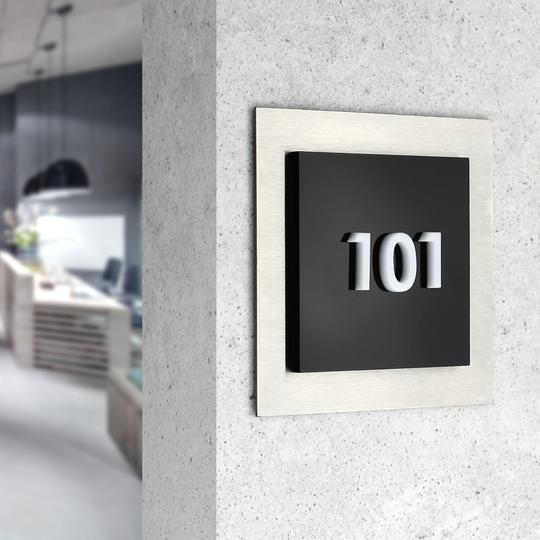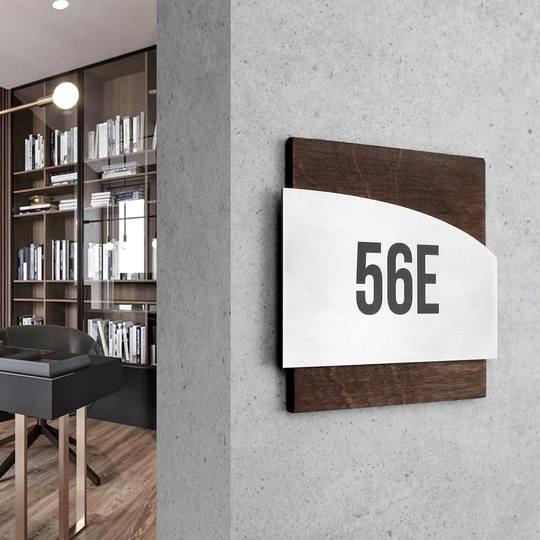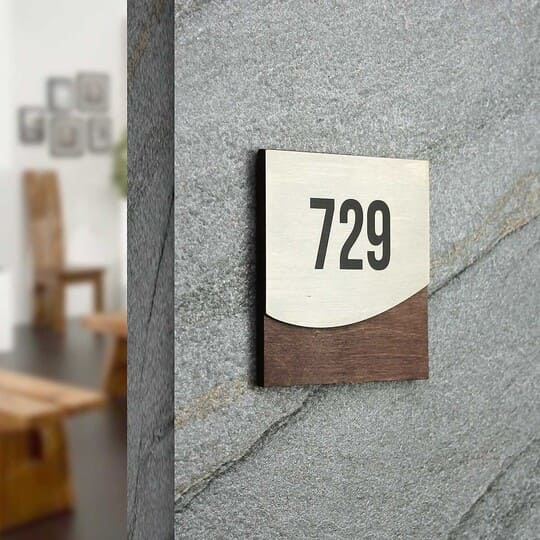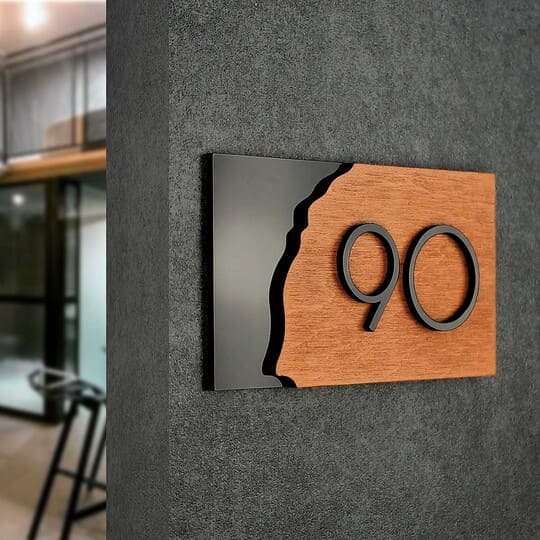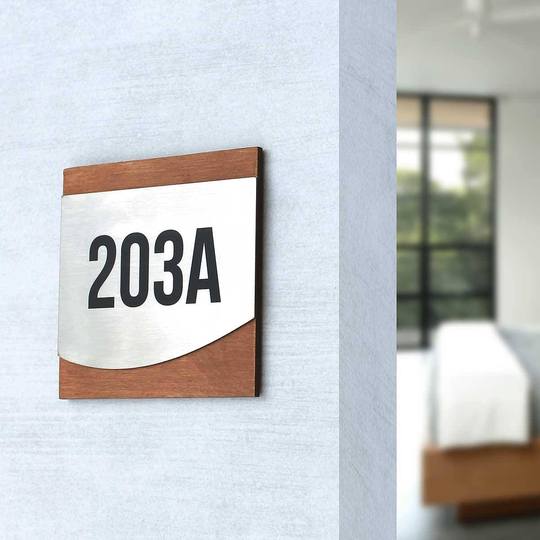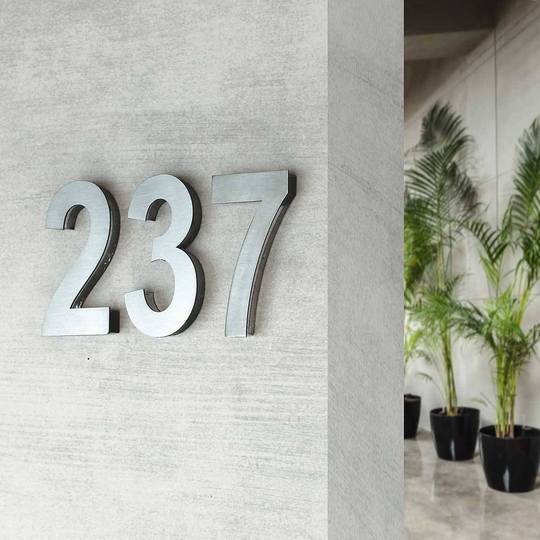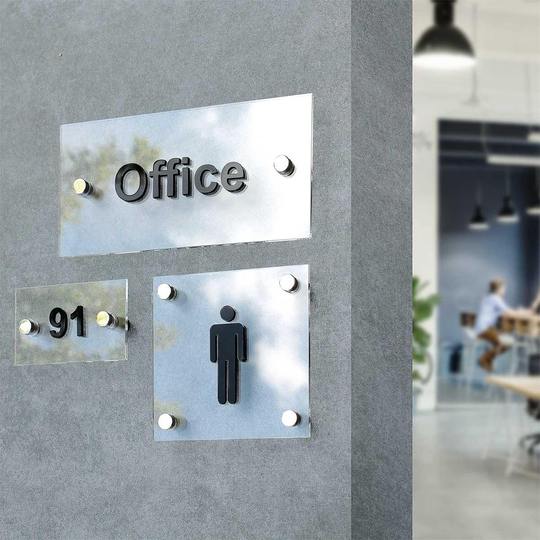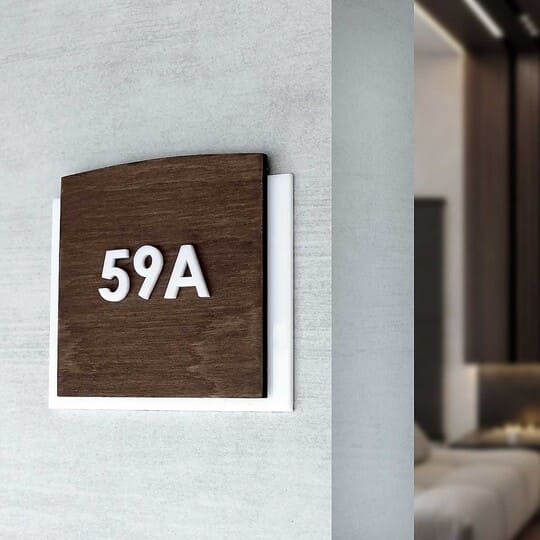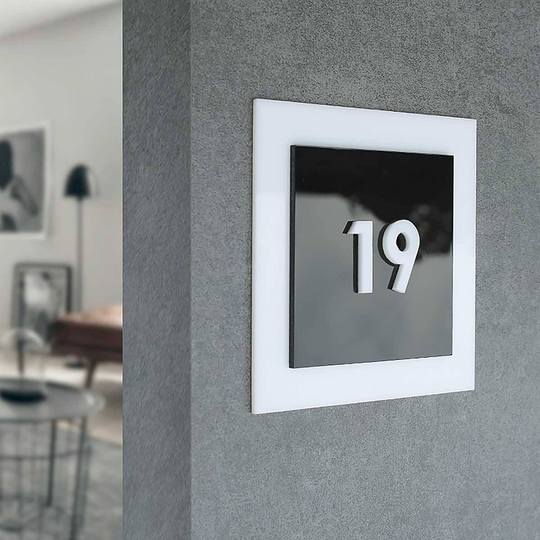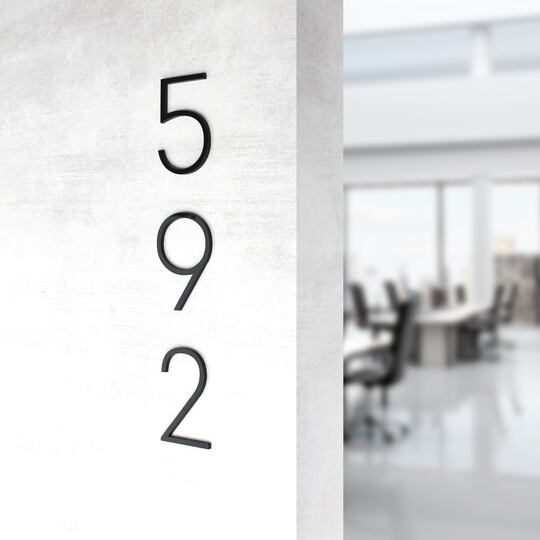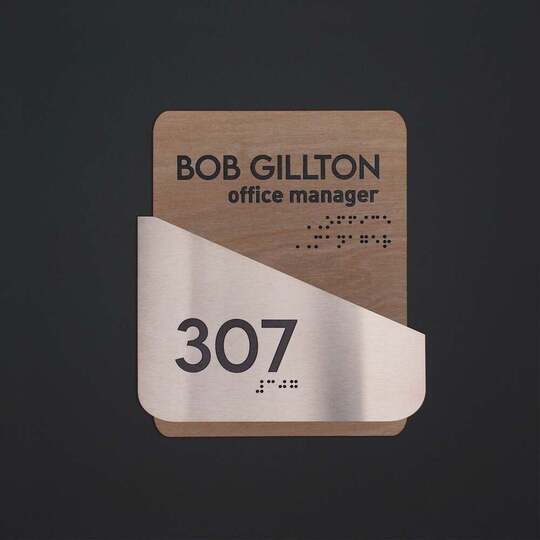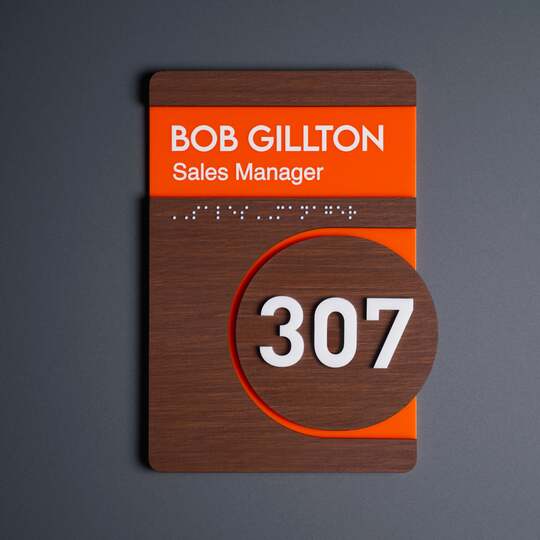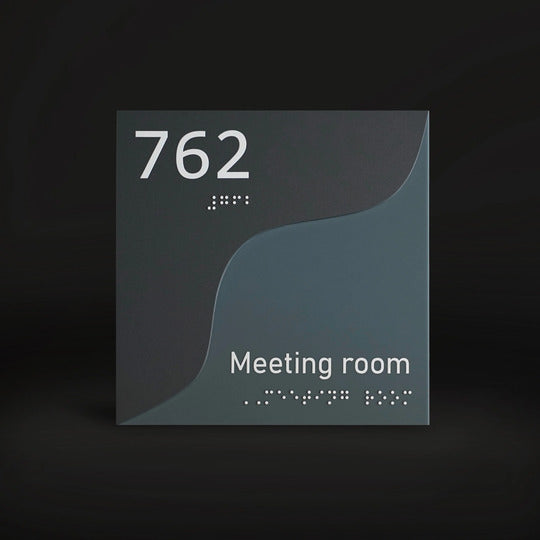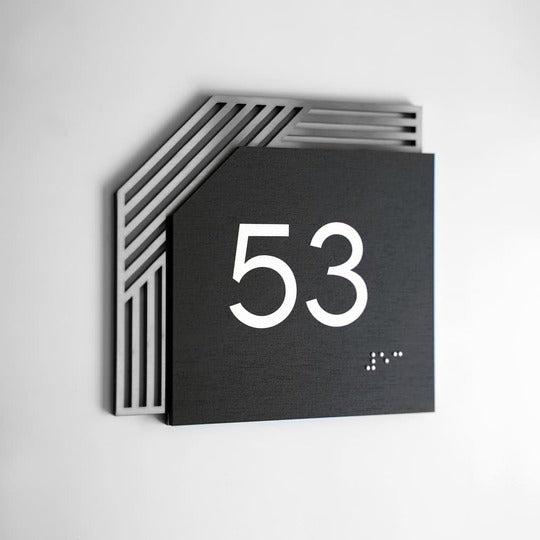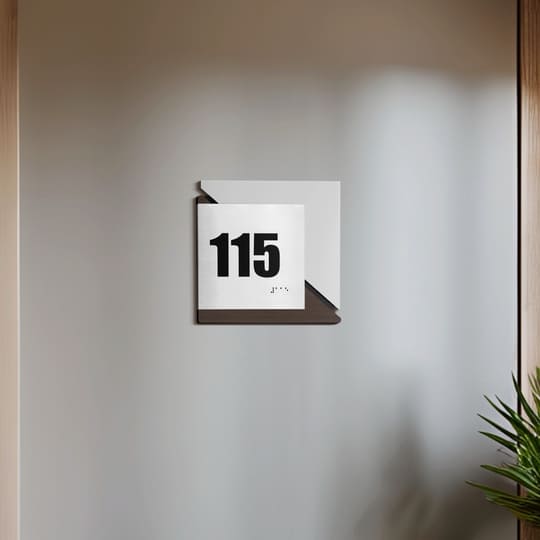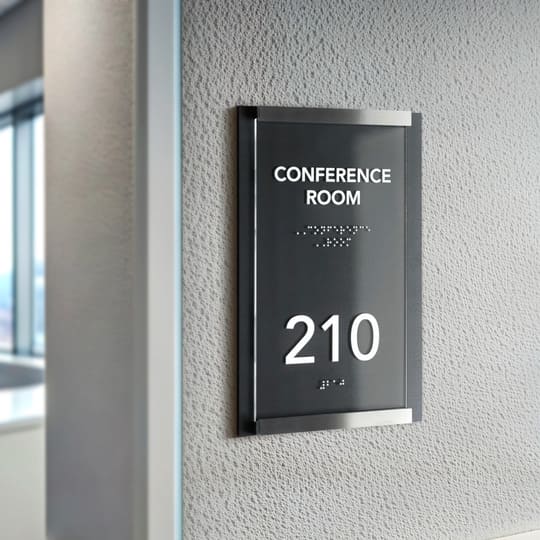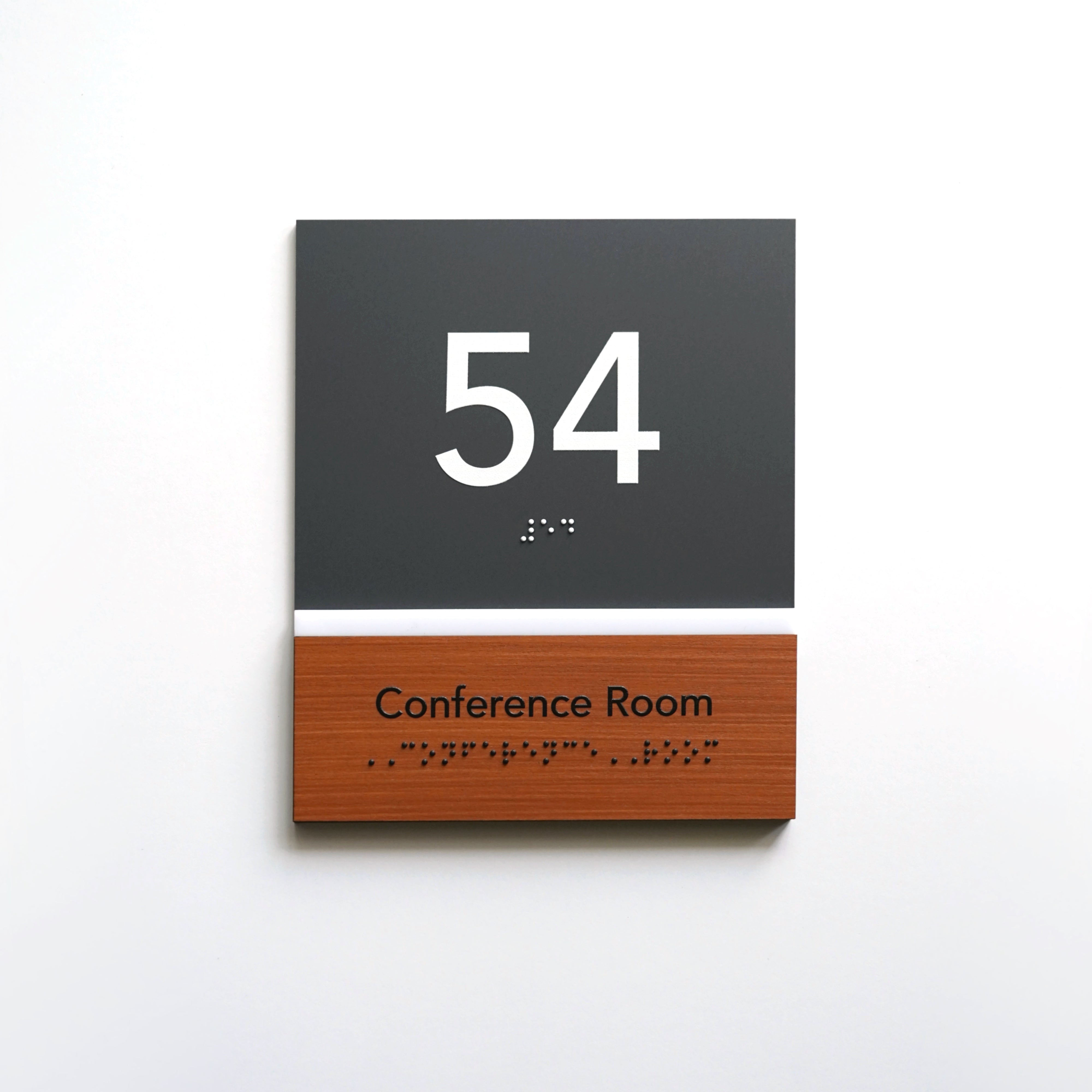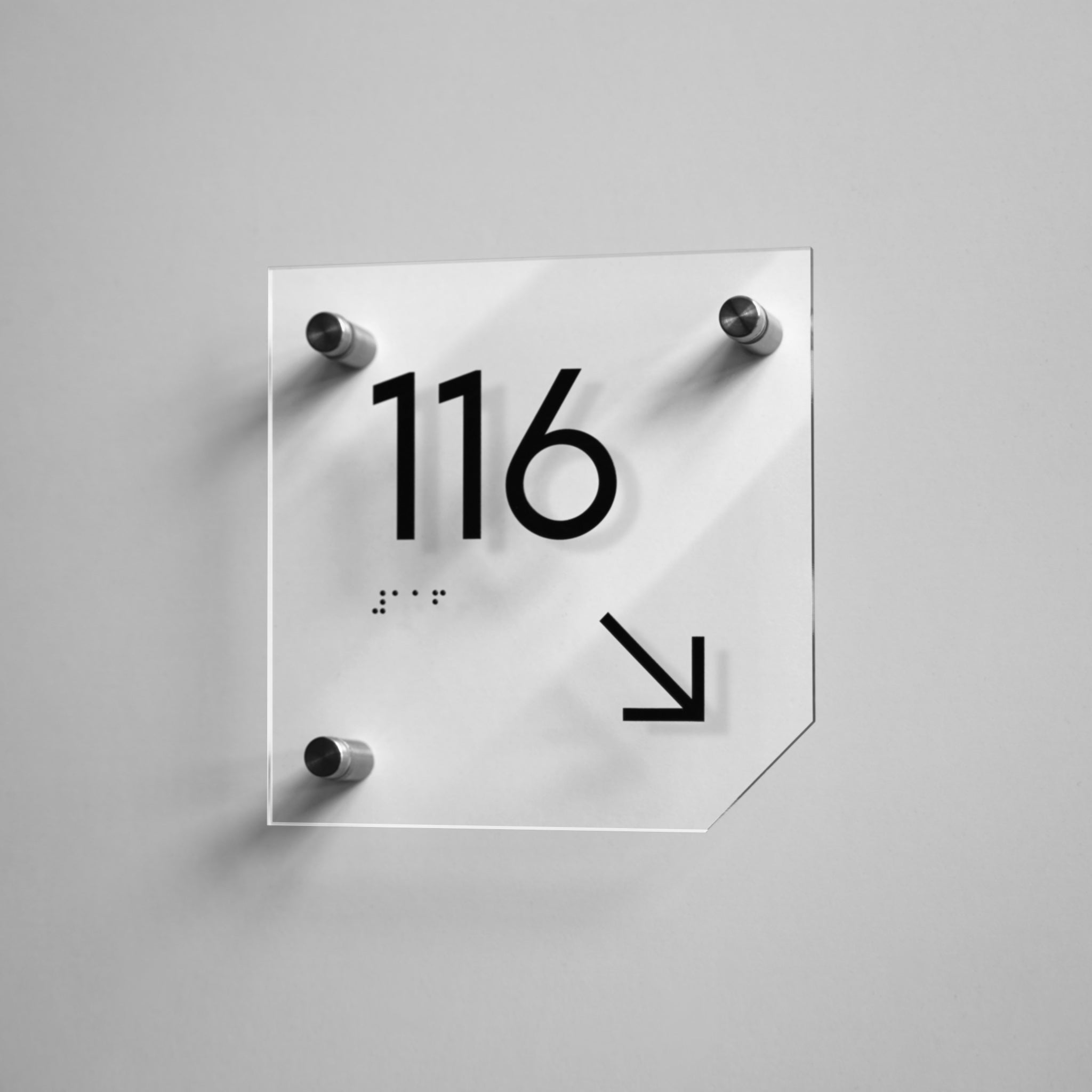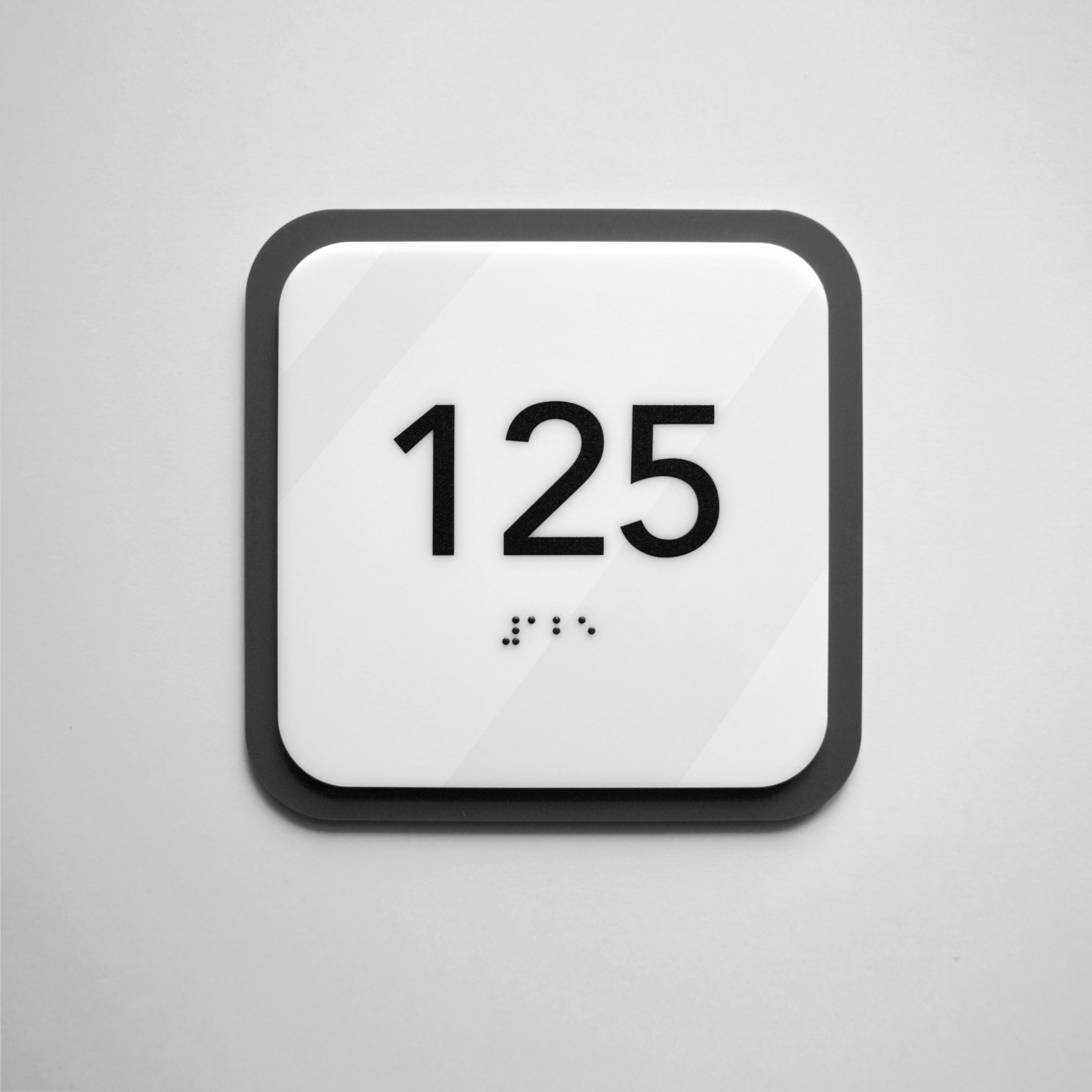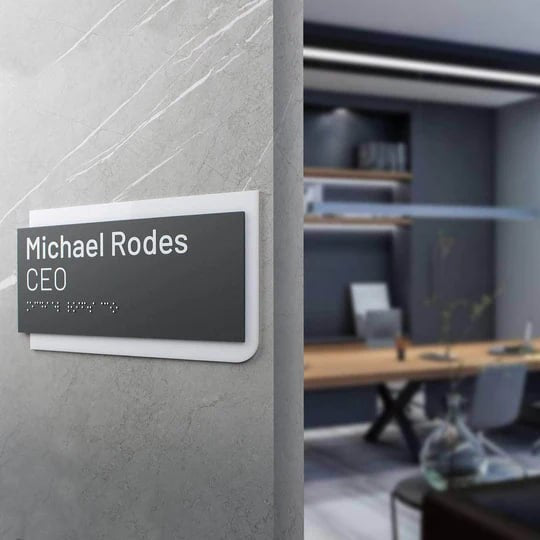
How to choose the right hotel sign design: trends of 2025
Everything a person sees when entering a hotel for the first time — from the front desk to the room design — contributes to their first impression. That’s why nothing in a hotel’s environment should be accidental. In fact, a guest experience begins even before the first smile from the staff: it starts with the entrance design, the color of the walls, the lighting, and, importantly, the door signage.
Signage as the silent language of hospitality
Hotel signage — though often overlooked — is one of the most powerful tools of visual communication. These small details help visitors not only navigate intuitively but also convey the character of the place, the brand identity, and the level of aesthetic sophistication. They effectively highlight the premium look and complete the interior’s design composition — enhancing the overall guest experience.
You could say it's a language of details — one that speaks volumes about the level of service and the hotel’s attention to guest comfort, without saying a word. It demonstrates how much each visitor is valued. While in the past hotel signage was viewed simply as a practical necessity, the 2025 trends reveal a new perspective: signage should now be an integral part of the design concept — one of the key elements that make a guest experience memorable. This is especially relevant for businesses focused on tourism and destination-driven hospitality.
Today, these elements must be visually well-thought-out, with clean geometric shapes, made from eco-friendly materials, and carry a sense of understated elegance. Such design choices emphasize refined style — without excess or pretension — and prepare your space for the future of hospitality.

Custom hotel signs: being unique is a must-have
Interior wayfinding signage in hotels sets the mood before a guest even opens the door to their room. Without a single word or gesture, directional signs can communicate the character of the establishment and its attention to detail — making a subtle but important impression on the guest. From room number plaques to indicators leading to the spa, reception, conference halls, and elevators — every element must be not only functional but also harmonious.
To truly be effective, signage must be part of the overall design concept. It should perfectly match the architectural style, color palette, materials, lighting, and even the shapes of the furniture. When all these details come together in a unified system, they create a cohesive interior that reinforces the hotel’s branding, gives the space a premium feel, and builds trust — both in your interior and your team.
Main Types of Hotel Signage
-
• Identity signs
Display the hotel’s name or logo. Create the first impression and reflect the brand. -
• Lobby signs
Help guests find the front desk, restrooms, elevators, or waiting areas. -
• Wayfinding signs
Guide guests to rooms, spa, restaurant, or conference areas. Improve navigation and comfort. -
• Door signs
Include room numbers, “Do Not Disturb,” or accessibility indicators. Support privacy and style by enabling guests to move easily around the hotel.
Signage materials: what’s trending in 2025
Today’s travelers expect more than just good service — they seek thoughtful attention to detail. The market demands sustainability, tactile textures, and a premium look that simultaneously reflects brand responsibility. In the world of hotel sign design, there’s growing interest in materials that are not only durable but also seamlessly integrate into the spatial concept.
Top Hotel Signage Materials
-
• Stainless steel signs — a symbol of status, resilience, and minimalism. These work well in business-class hotels, modern aparthotels, and commercial spaces within hotels where clean aesthetics and informational clarity are essential. Visually, they evoke a sense of stability and reliability and are a perfect fit for interiors in high-tech, modern, or industrial loft styles. These materials also require proper maintenance to keep their professional look.
-
• Wooden signs — an embodiment of warmth, coziness, and a connection to nature. They convey a sense of homey comfort while highlighting the brand’s commitment to sustainability. Ideal for natural locations — such as boutique hotels, resorts, spa areas, and countryside apartments — where the atmosphere of relaxation and authenticity matters. Wood pairs beautifully with stone, linen, light woods, and neutral tones.
-
• Acrylic signs — a great choice for those who value modernity, clarity, and clean form. These signs have a sleek yet striking appearance, especially when paired with backlighting and contrasting surfaces. Frequently used in urban hotels and spaces with contemporary architecture — where minimalism, Scandinavian design, or loft styles dominate — acrylic allows for either "invisibility" or a bold graphic statement.
Modern signage design sets new standards for simplicity, innovation, and aesthetics in the hospitality industry. The choice of font on these signs also plays a crucial role in readability and contributes to the professional image of the hotel.

Shapes of signs: geometry as a style
In modern design, simplicity is key. The most popular sign shapes today are simple and easy to read — even in visually noisy environments. Geometric forms like rectangles, circles, and arches have become the foundation of a new, refined aesthetic that helps guests navigate effortlessly.
At the same time, there’s still room for creative experimentation. Asymmetry is a great way to add energy and personality, but it’s important not to overdo it. Every element should remain part of a cohesive interior style — without visual dissonance. So if you’ve hesitated to try something bold, thinking it might be "too much," now is the perfect time to give it a go.
Moreover, well-designed hotel signage isn’t just attractive — it’s functional, immediately readable, and serves as a natural extension of your brand identity.
Colors of signs: understated elegance
Today’s hospitality aesthetic leans toward palettes that evoke calm and serenity. Increasingly, hotels are moving away from loud, bright accents in favor of deep, natural textures that convey sophistication and impeccable taste.
Among the current favorites are rich, earthy hues: graphite, which adds depth and elegance; deep forest green, associated with peace and nature; warm terracotta, evoking sunlight and comfort; soft sand, which creates a feeling of ease and relaxation. These shades provide the foundation for creating a harmonious and visually cohesive environment.
Another key trend is the thoughtful combination of materials and colors — especially pairings that highlight textures and give hotel signage a unique character:
-
• Metal + wood (e.g., matte steel and oak) — a contrast between industrial precision and organic warmth.
-
• Acrylic + wood — combining modern transparency with classic subtle elegance.
-
• Black + natural wood tones — a timeless combo that always looks sleek and refined.
The clear shift away from neon or "acid" colors in favor of understated elegance signals a new level of design sophistication in the hospitality industry — where the goal is no longer to shock, but to create a luxurious and welcoming atmosphere that highlights hotel facilities in the best light.

How to choose the right signage style for your hotel
A well-designed, stylish sign is like an artist’s signature on a canvas. It completes the overall design and adds a sense of wholeness. To choose the perfect option, it's important to consider three key criteria.
First, the hotel signage must perfectly align with the hotel’s concept — whether it's minimalism, loft, classic, or eco-style. Second, color schemes must be taken into account, ensuring the signs complement the furniture and wall tones. Third, remember its functional purpose: signage for the lobby requires a more formal style, while hotel signage for guest rooms can incorporate branding elements.
Avoid overwhelming the interior with excessive accents. Custom hotel signs can serve as either a refined touch or a logical conclusion to the entire design concept. This makes the space cohesive and complete.
Bsign signage design — a case of creativity and premium quality
Have you ever noticed how a small detail can completely change the feel of a space? In hotel interior design, there are no insignificant elements. Everything matters — from room layout to the lighting in the lobby. Often, it’s the subtle things, like aesthetic signage that add the finishing touch and create a sense of unity. When carefully selected, they quietly say: "Everything here has been thoughtfully considered."
This is exactly the type of premium signage that Bsign creates for hotels. Our products can be adapted to suit a wide range of styles — whether it’s the restraint of minimalism, the warmth of eco-style, or the traditional elegance of classic interiors. We believe great design should be inclusive, which is why many clients request Braille signs — making the space accessible without disrupting the overall aesthetic. Our hotel signage can also be creative, incorporating company logos or functioning as special QR-code plates.
If you want signage to feel appropriate rather than intrusive, it’s important to focus on clear shapes, clean geometry, and a simple design. Minimalist signs are easy to read and do not interrupt the visual rhythm of the space, thus contributing to a professional appearance and smooth functioning of hotel facilities.
We follow signage trends — but we don’t copy them. Instead, we select what truly works: natural materials and calming colors. Because in a thoughtfully designed interior, nothing is left to chance. And when hotel signage is an integral part of the space, it can be just as impactful as architecture itself — reinforcing the hotel’s branding and supporting the logic of its interior design.

Hotel signage design: examples and case studies
Successful design speaks for itself. Instead of dry descriptions, we’ve collected three real-life examples that show how well-chosen signage can transform a hotel’s interior.
Case 1: A premium loft-style hotel
Stainless steel signs combined with graphite and black acrylic perfectly complemented the industrial aesthetic, emphasizing its restrained elegance.
Case 2: A hotel with a Scandinavian vibe
Wooden signs with acrylic inlays created a warm, peaceful atmosphere — exactly what guests seek when coming to relax.
Case 3: A boutique hotel by the coast
A boutique hotel by the coast. Acrylic signage in seafoam and sand tones visually expanded the space and conveyed a sense of lightness and freshness.
Find more practical solutions on our blog: The 5 most popular types of hotel signage.

Hotel interior design that speaks for itself
Many believe that hotel interior signage is a minor detail and that guests don’t really notice it when entering a hotel. But in reality, when a person steps into a space, they subconsciously take in the atmosphere and details. Think of yourself: when you enter an unfamiliar environment, what helps you find your way and understand where to go? Most often, it’s the navigation signs — because in a thoughtfully designed space that cares about its clients and guests, they are always present. Well-designed signage that blends harmoniously with the interior not only provides guidance but also sets the mood, reinforces the style, and intuitively signals that everything here has been carefully considered.
At Bsign, we create precisely these kinds of solutions. For us, it’s essential that each item is not just a decorative element, but a precise, well-placed, and purposeful tool that supports intuitive navigation without overloading the space — truly enabling guests to enjoy the full range of facilities.
Do you want your hotel space to communicate a high level of service even before your staff says a word? From classic plaques to modern digital signage, the right solution can elevate your guest experience. Get in touch with us — we’ll guide you through how to choose hotel signs style that fits your space perfectly and becomes a true extension of your service philosophy.
